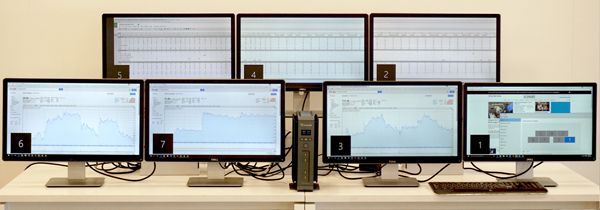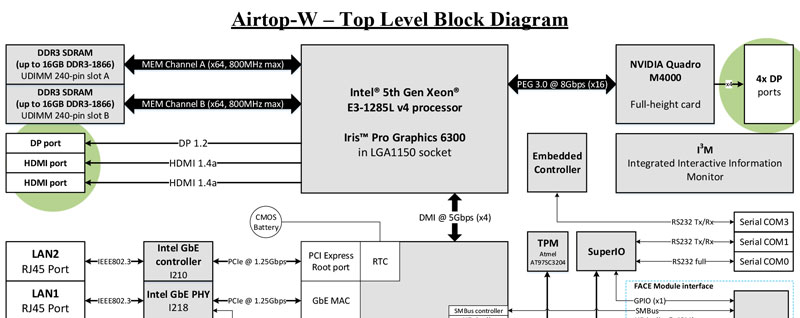How do I create a multi-monitor set up with four, five, six or even seven screens?
Nov 22, 2016
Two displays on your desk is the new measure of status in the office but a growing number of applications use many more:
- Control rooms often have multiple screens presenting different aspects of the control scenario.
- Financial trading desks often use multiple screens to present dynamically changing scenarios.
- CCTV operators often have perhaps three or four displays presenting the view from specific cameras, one with tiled outputs from multiple sources and one presenting status information.
What are the advantages of a PC with multi-display capability?
The most obvious benefit is hardware cost – having seven PCs supporting an array of seven screens is expensive in terms of hardware, and each one will require its own licensed copy of any applications.
In addition, it is much easier to dynamically reconfigure the way information is split across the screens. Screens can be used together as an extended desktop, or mirrored.
Images from several cameras can be tiled on a single screen – and expanded instantly on a separate screen if there is anything of interest.

Multi-Display mode enables you to work with an extended desktop.
Which PCs have multi-display capability?
As a minimum, you need a HDMI or display port on your PC for each screen that you want to drive. Many new PCs now offer 2 HDMI outputs via the GPU, so that they can offer dual display capability.
Workstation class machines often provide connections for four displays. Some hardware can go further. For example, the Airtop-W fanless workstation supports up to seven displays, through two HDMI interfaces and five display port outputs.
So, the first question to ask, if you are looking for more than 2 displays, is how many display outputs are present on your computer.

How many display outputs are present on your computer? 2 HDMI ports + 5 Display Ports here.
Can I have high resolution like 4K on multi-monitor?
The second question to consider is what resolution you need on each display. Our advice is that the resolution of the screen should at least match the resolution of the source. High resolution like 4K is much more demanding for the graphics processor and some PCs only offer this on the primary screen.
More powerful machines, like the Airtop-W, support 4K on all seven screens. To find out, check the specs of your display interface.
Which other features should I check for on a PC for multi-display?
There is more to multi-display though than just adding display ports on the back. The machine needs the power to keep refreshing the data on each attached display in real time too.
Check the graphics capability of your computer as well as the processor and memory to ensure it will support features like multi-display 3D acceleration.
For example, our Airtop-W is powered by a 64-bit Quad-Core Processor and the two DDR3 SDRAM memory slots can be expanded up to 32GB. It also has a full-height graphics card, a remarkable feature in a SFF passively cooled machine.
Lastly you should consider storage requirements – will you want to record the output from all of the cameras on your CCTV installation? The minimum we recommend is 2 TB and the Airtop-W goes up to 10TB.
Articles Related to this topic
CAD Power & Silent Workstation: Can You Have It All?
3 Reasons to Update or Reset the BIOS of your fanless PC
Unveiling IPC3... the Mini Intel Kaby Lake PC!
 Part of
Part of